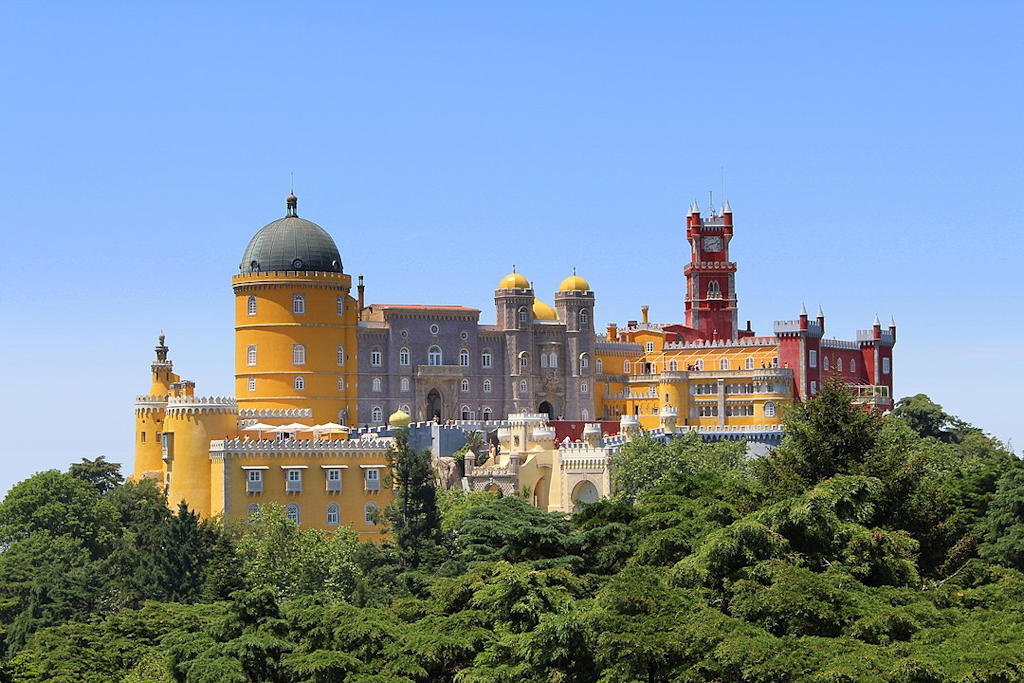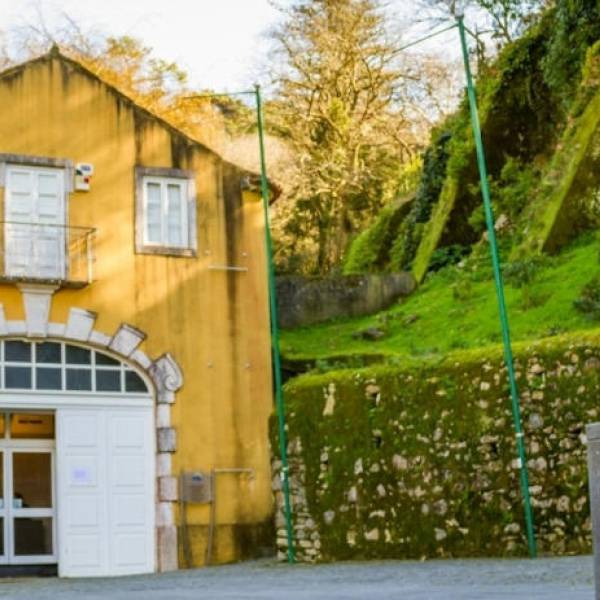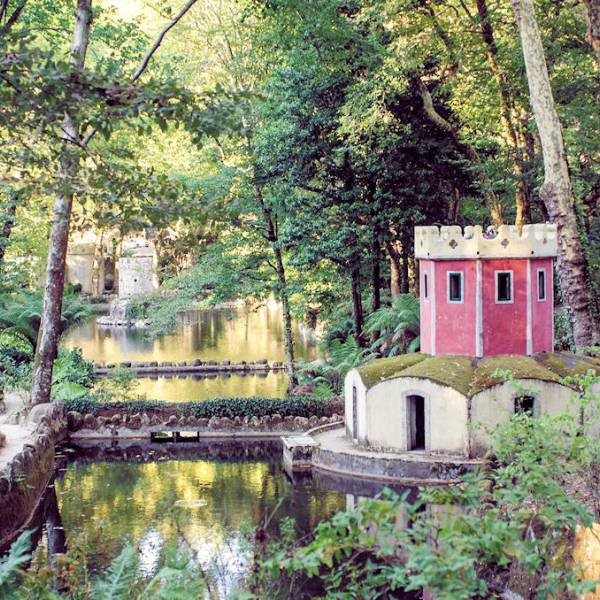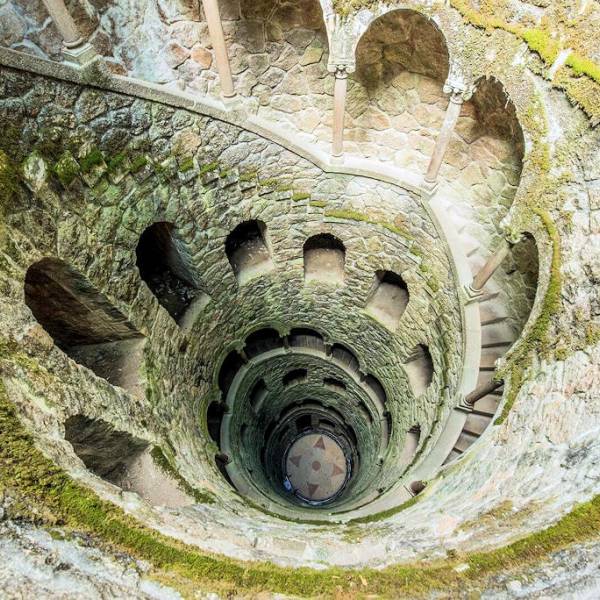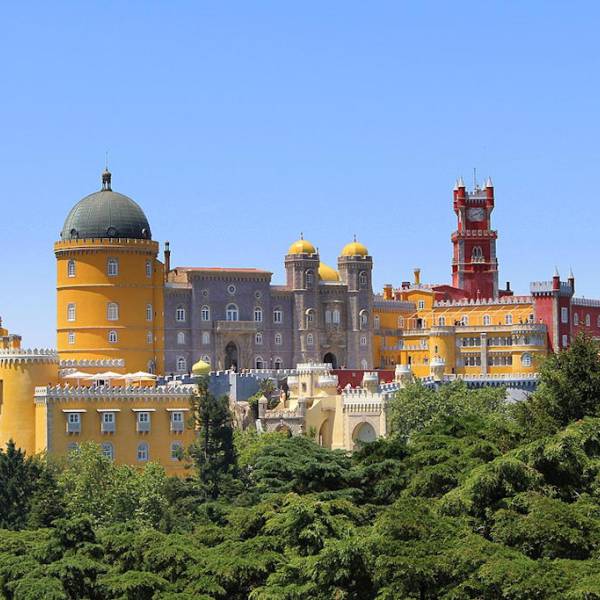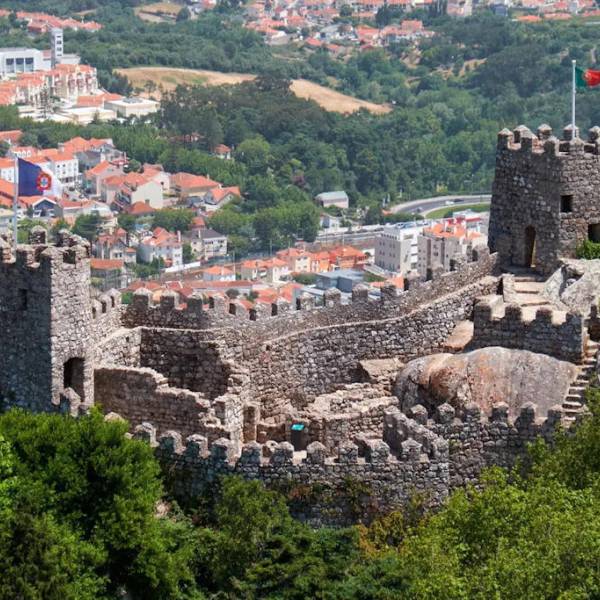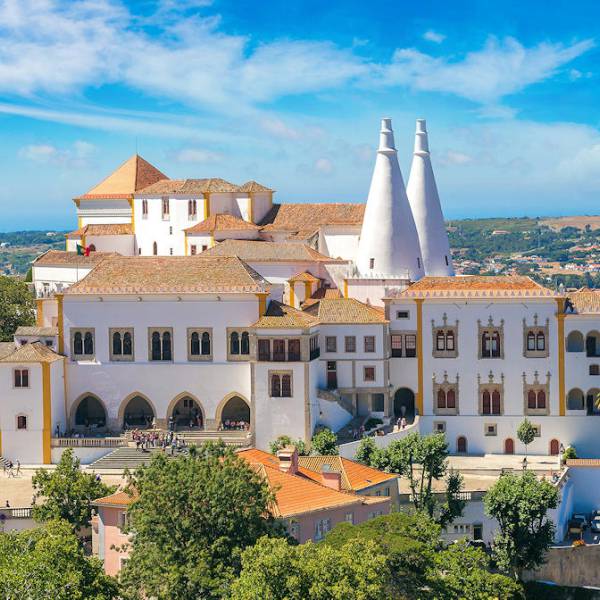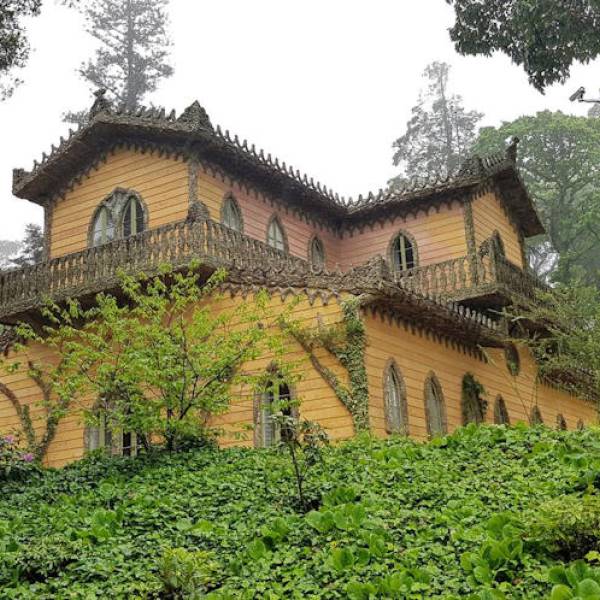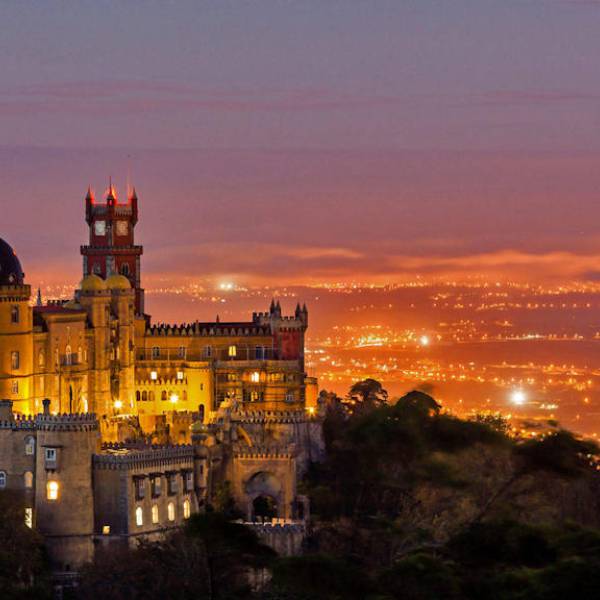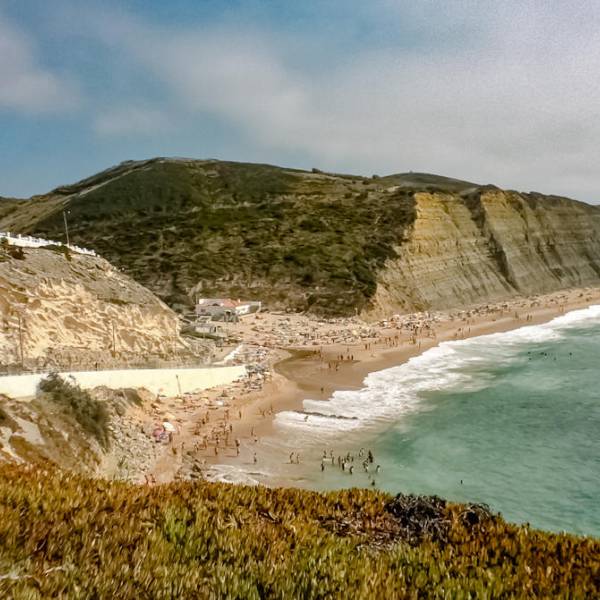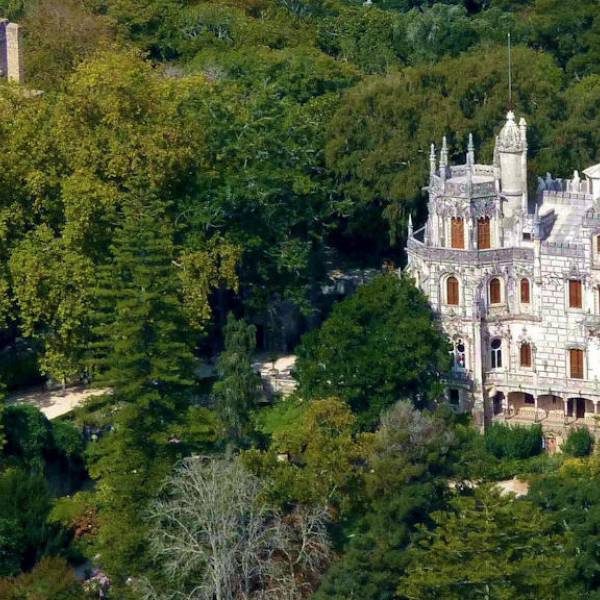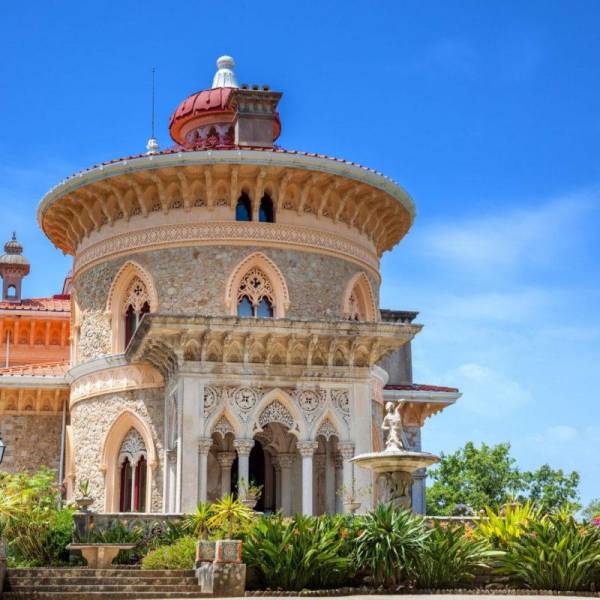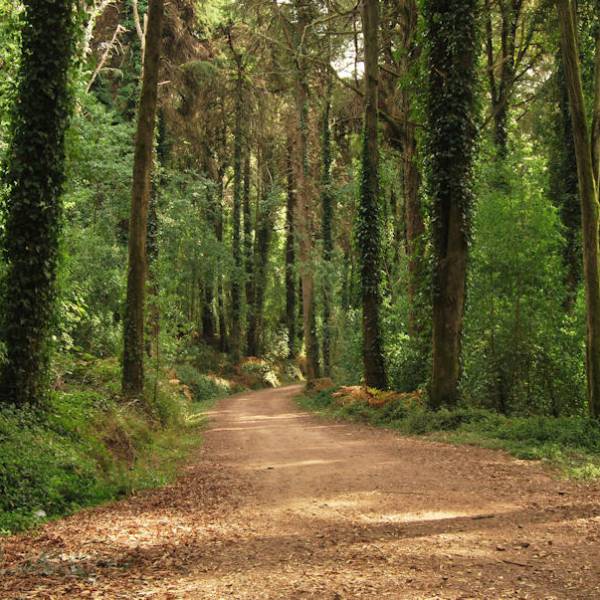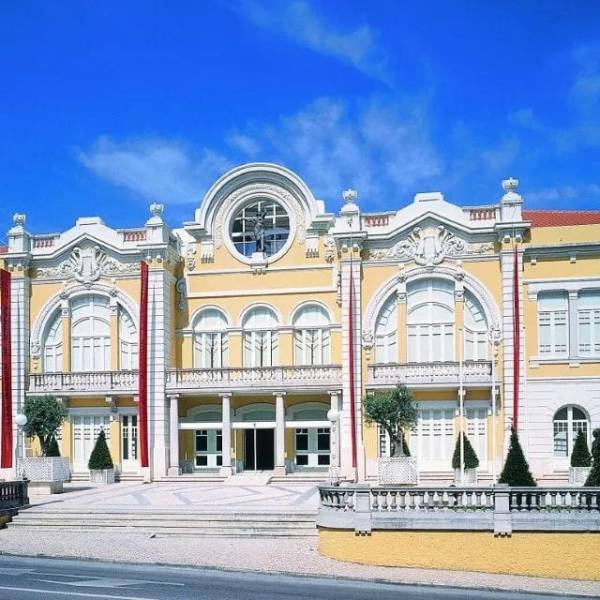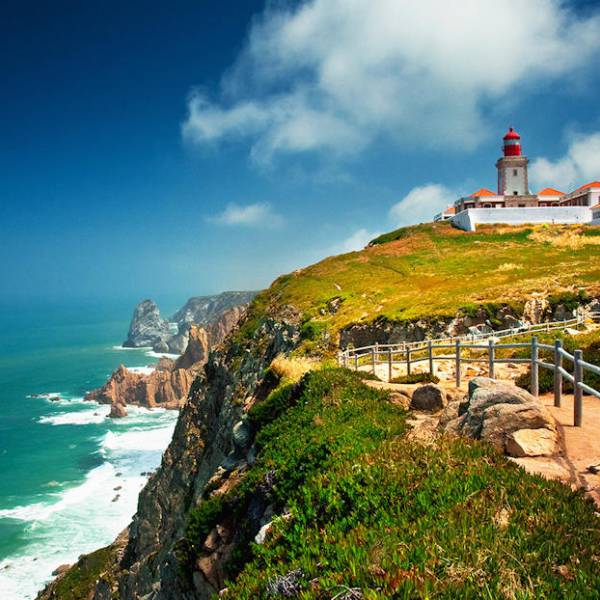Pena National Palace is a must-see day trip from Lisbon. Located in the picturesque town of Sintra, this fairytale-like palace is a UNESCO World Heritage site. Explore its vibrant colors, intricate details, and eclectic architectural styles that blend Gothic, Renaissance, and Moorish influences. Take in the panoramic views from the palace's towers and immerse yourself in the romantic atmosphere of this enchanting destination. A visit to Pena National Palace is like stepping into a storybook.
The history of the palace dates back to the 16th century when a small chapel dedicated to Our Lady of Pena was built on the site during the reign of King John II of Portugal. In the following century, King Manuel I of Portugal ordered the reconstruction of the chapel, which was then donated to the Order of Saint Jerome. A wooden convent was initially built, but it was later replaced by a stone building to accommodate 18 monks.
Over the years, the palace underwent several transformations and faced significant damage caused by a lightning strike and the 1755 earthquake. Only the main altar area of the chapel, with a marble and alabaster altarpiece attributed to Nicolau Chanterene, remained intact.
In the 19th century, King Ferdinand II of Portugal became enamored with the picturesque landscape of the Sintra Mountains and the ruins of the old convent. In 1838, he acquired the convent, the surrounding grounds, the Moorish Castle, and adjacent properties. He commissioned the German mineralogist Baron Wilhelm Ludwig von Eschwege, who was an amateur architect, to design and oversee the restoration of the convent into a summer residence.
The construction of the palace progressed quickly, and by 1847, the basic structure was completed according to Baron Eschwege's plans. However, King Ferdinand II made significant contributions to the decorative and symbolic details, incorporating his own romantic temperament into the design. The palace features pointed arches, medieval-style towers, and elements inspired by Arabic architecture. Notably, the north facade of the palace includes a reproduction of the Chapter Window from the Convent of Christ in Tomar, which was designed by the king himself.
After King Ferdinand II's death, the palace was inherited by his second wife, Elisa Hendler, Countess of Edla. This decision caused controversy since the palace was already considered a historic monument. Eventually, an agreement was reached with the Portuguese government, and the palace was purchased by King Luís I of Portugal in 1889. Queen Amélie, wife of King Carlos I, frequently stayed at the palace and was particularly involved in the decoration of the private quarters. The palace served as a venue for official visits, such as the lunch hosted for King Edward VII of the United Kingdom during his visit to Portugal in 1903.
Following the assassination of King Carlos I, Queen Amelia sought refuge at the Pena National Palace. She often received visits from her son, King Manuel II, who had his own reserved quarters there. During the Republican Revolution of 1910, Queen Amelia remained at the palace, observing the events unfolding in Lisbon from the terraces. She left Portugal the next day, joining her son and mother-in-law in exile.
With the establishment of the Portuguese Republic, the palace was converted into a museum and officially named the Pena National Palace. During Queen Amelia's visit to Portugal in 1945, she returned to her beloved Pena National Palace. She was deeply moved by the preservation of the palace and the recognition it received as a national monument. Queen Amelia's visit sparked renewed interest in the palace, and efforts were made to restore and maintain its historical and architectural significance.
Throughout the 20th century, the Pena National Palace underwent extensive restoration work to bring it back to its former glory. The efforts focused on preserving the unique blend of architectural styles while ensuring the structural stability of the palace. Skilled craftsmen and artisans meticulously worked on intricate details, including the colorful tiles, ornate ceilings, and decorative motifs.
In 1995, the Pena National Palace, along with the surrounding cultural landscape of Sintra, was classified as a UNESCO World Heritage site. This designation recognized its outstanding universal value as an exceptional example of 19th-century Romantic architecture and its harmonious integration with the natural surroundings.
Lisbon.vip Recommends
The palace is surrounded by extensive parkland, known as the Park of Pena Palace, which covers an area of about 200 hectares. The park features a diverse collection of trees, plants, and gardens, providing a tranquil setting for leisurely walks and picnics. Within the park, visitors can also discover other notable structures, such as the Chalet of the Countess of Edla, a charming Swiss-style cottage built by King Ferdinand II for his second wife.
The Pena National Palace continues to be a symbol of Portugal's rich history and cultural heritage. It showcases the country's architectural prowess and its appreciation for the romantic and picturesque. Whether you are fascinated by history, art, or simply seeking breathtaking views, a visit to the Pena National Palace is sure to leave a lasting impression.
Map View


